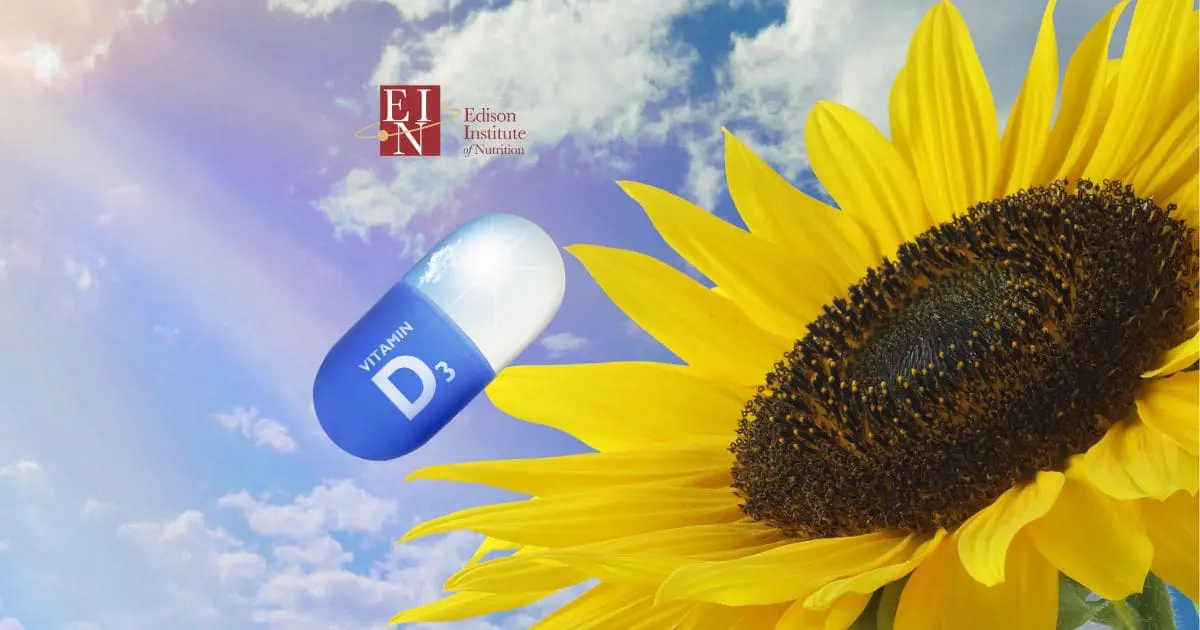
The Sunshine Vitamin
Vitamin D
Vitamin D (Calcitriol) is not just a vitamin but is also considered a steroid hormone – because the body can manufacture it. This fat-soluble vitamin plays an essential role in the health of the entire body where Vitamin D receptors (VDR) have been found throughout the body including tissues as well as bone.
In Canada and the US, as well as northern climates above the 40th latitude, this deficiency is widespread and all too common. When summer is over and autumn is upon us…..school begins, the days become shorter and cooler — all means we spend more time indoors. The need to wear jackets and heavier clothes contribute to less sun exposure at peak hours. According to the Vitamin D Council, “If your shadow is longer than you are tall, you are not making much Vitamin D”.
There are many contributing factors which lead to this deficiency.
Why is it called the “sunshine vitamin”? It is actually made by the body, but ONLY in exposure to sunlight. The skin must be exposed to UVB rays in order for this to occur.
Sunlight reacts to a cholesterol-like compound in the skin known as 7‑dehydrocholesterol creating Vitamin D3 (cholecalciferol), hence the term “sunshine vitamin”. However, this is not the whole picture — this vitamin also requires liver + kidney participation in order to function optimally within the body. Vitamin D3 is converted by enzymes in the liver to 25-OHD3 which can be 2 – 5 times more potent than cholecalciferol itself, next then kidneys then convert the 25- OHD3 to 1,25 – (OH)2D3, which is now 10 times more potent than cholecalciferol . This particular vitamin requires whole body participation as well as a healthy liver and kidneys.
How did we get so deficient? This vitamin tops the deficiency list along with Vitamin B12 and Vitamin C, in our clinical experience. There are numerous reasons why this particular vitamin deficiency is widespread:
• The Great Indoors – it is not natural to work in a cubicle, behind a desk and drive long distances. We are not outdoors nearly enough to obtain sufficient exposure to the sun for the manufacture of this compound. Approximately a half hour of full body exposure is required to make 10,000 IU of Vitamin D.
• The Sunscreen Debate – the fear of sun exposure and recommendations to wear sunscreen blocks UVB rays from getting through to the skin to create Vitamin D3. Sunscreen is necessary for prolonged exposure to the sun, but it is essential to build a natural defense to sun exposure over time. However, beware, the darker the skin, the less of this nutrient is made!
• Void in Food? – There aren’t many foods available which provide us with this essential nutrient. According to World’s Healthiest Foods – the top foods are: Salmon, Sardines, Milk (goat & cow), eggs and shiitake mushrooms . Notably, is the age old practice of a spoonful of COD LIVER OIL which not only provides a sufficient amount of Vitamin D but also a great source of fat and Vitamin A as well. Check out World’s Healthiest Foods for more information on this and other nutrient and food related topics.
• Normal Versus Optimal – The best way to test for your levels is through blood testing known as 25(OH)D test. This test must be requested from your Medical doctor or can be ordered online through https://www.vitamindcouncil.org/ However, standard medical testing procedures using the 25(OH)D test, continue to use outdated measurement threshold (cut off).
Standard testing levels: 30 ng/mL or 75 nmol/L
Optimal testing levels: 50 ng/mL or 100 – 150 nmol/L according to the Vitamin D Council and Vitamin D Society
• What depletes Vitamin D? – Certain medications can either deplete the body of Vitamin D stores or inhibit the absorption or conversion. These medications include:
Anti Inflammatory medication — Corticosteriods
Anti convulsant medication – Certain Barbituates
Cholesterol Lowering Medication – Bile Acid Sequesterants and/or Statins
GERD or Ulcer medications — H2 Antagonists
Oral Contraceptives
How Can We Get Sufficient Levels?
Shouldn’t our bodies make enough with adequate sun exposure? There are so many factors involved in its production, that very often the majority of the population does not achieve optimal levels of this crucial nutrient. Both the Vitamin D Council and the Vitamin D Society recommend daily supplementation in the amount of 1000 – 5000 IU daily. However, experts and current research have shown 10,000 IU daily supplementation to be both optimal and preventative in regards to diseases associated with Vitamin D deficiency and maintaining optimal levels measured through blood values.
Our recommendation? Have your Vitamin D levels checked every 3 months and base your supplement levels on maintaining optimal levels of this essential nutrient. Your health depends on it!
